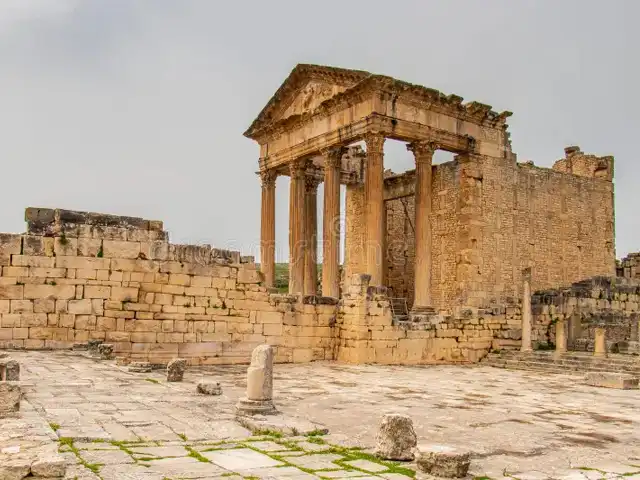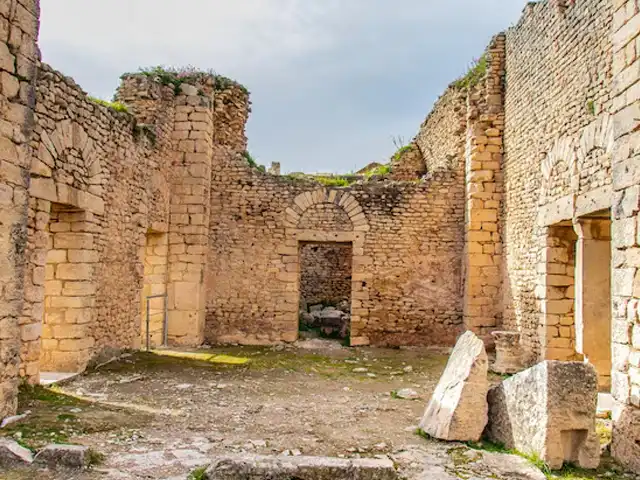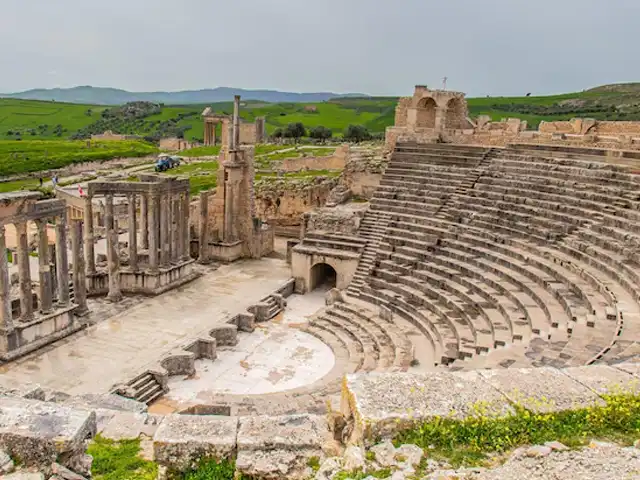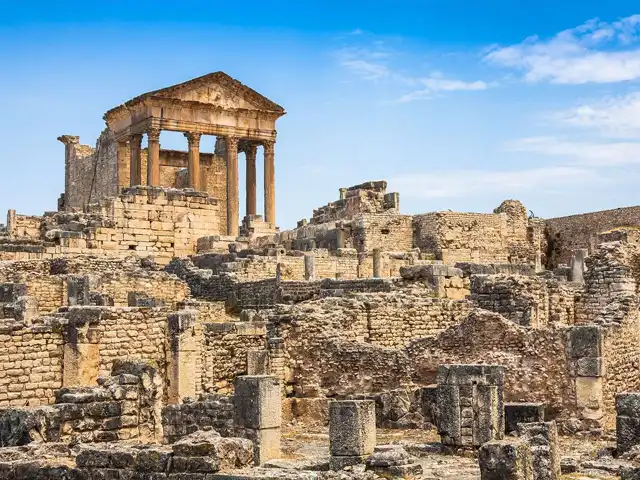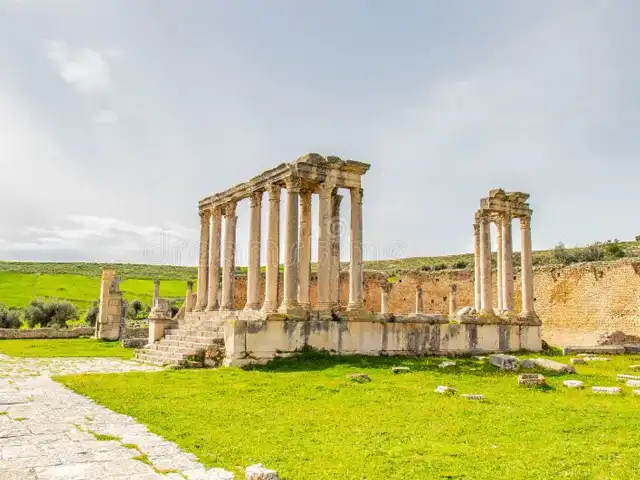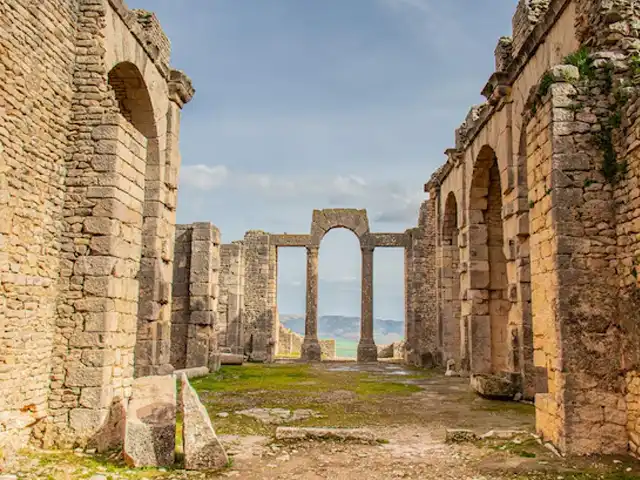Dougga archaeological site
The Dougga Archaeological Site is the most prestigious archaeological site in Tunisia. Several factors combine to give it a special place in the Tunisian archaeological panorama: its location on a spur overlooking the rich valley of the Mejerdah (Thugga, in the Libyan language, means greenery), the extent of the site which spreads over several tens of hectares and which covers several historical eras, the setting of vegetation – in particular this forest of olive trees several hundred years old – which surrounds it and, of course, the excellent state of conservation of most of the monuments. Among these, the capitol and the theatre stand out, having been “restored” during a campaign led after the First World War by prisoners of war.
Historical Significance
The site spans several historical periods, showcasing the progression of ancient African history. From the dolmens to Byzantine fortifications, every stage is represented by beautifully crafted monuments. Notable buildings include the capitol, the theatre, the Lybico-Punic mausoleum, and superb patrician residences.
Location and Setting
Dougga is located in northwestern Tunisia, perched on a hilltop at an altitude of 571 meters, overlooking the fertile valley of Wadi Khalled. Before the annexation of Numidia by Rome, Thugga had over six centuries of history and was likely the first capital of the Numidian kingdom. It thrived during Roman times but declined during the Byzantine and Islamic periods. The impressive ruins visible today provide insight into the resources of a Romanized Numidian city.
Cultural Integration
These remains of an entire city with all its components testify to more than 17 centuries of history. They form an exceptional ensemble illustrating the synthesis of various cultures: Numidian, Punic, Hellenistic, and Roman. Roman monuments were integrated into the fundamentally Numidian urban fabric. Despite its relative importance in the administrative structure of the Roman province of Africa, Dougga boasts a remarkable collection of public buildings, mostly dating from the 2nd and 3rd centuries AD. Dougga is considered the best-preserved Roman city in North Africa, making it an exceptional illustration of daily life in antiquity.
Heritage Status
The archaeological site of Dougga has been inscribed on the list of World Heritage Sites and designated as a national archaeological park. This status ensures its appropriate development and the provision of more complete services for visitors.
Dougga Archaeological Site in Pictures
